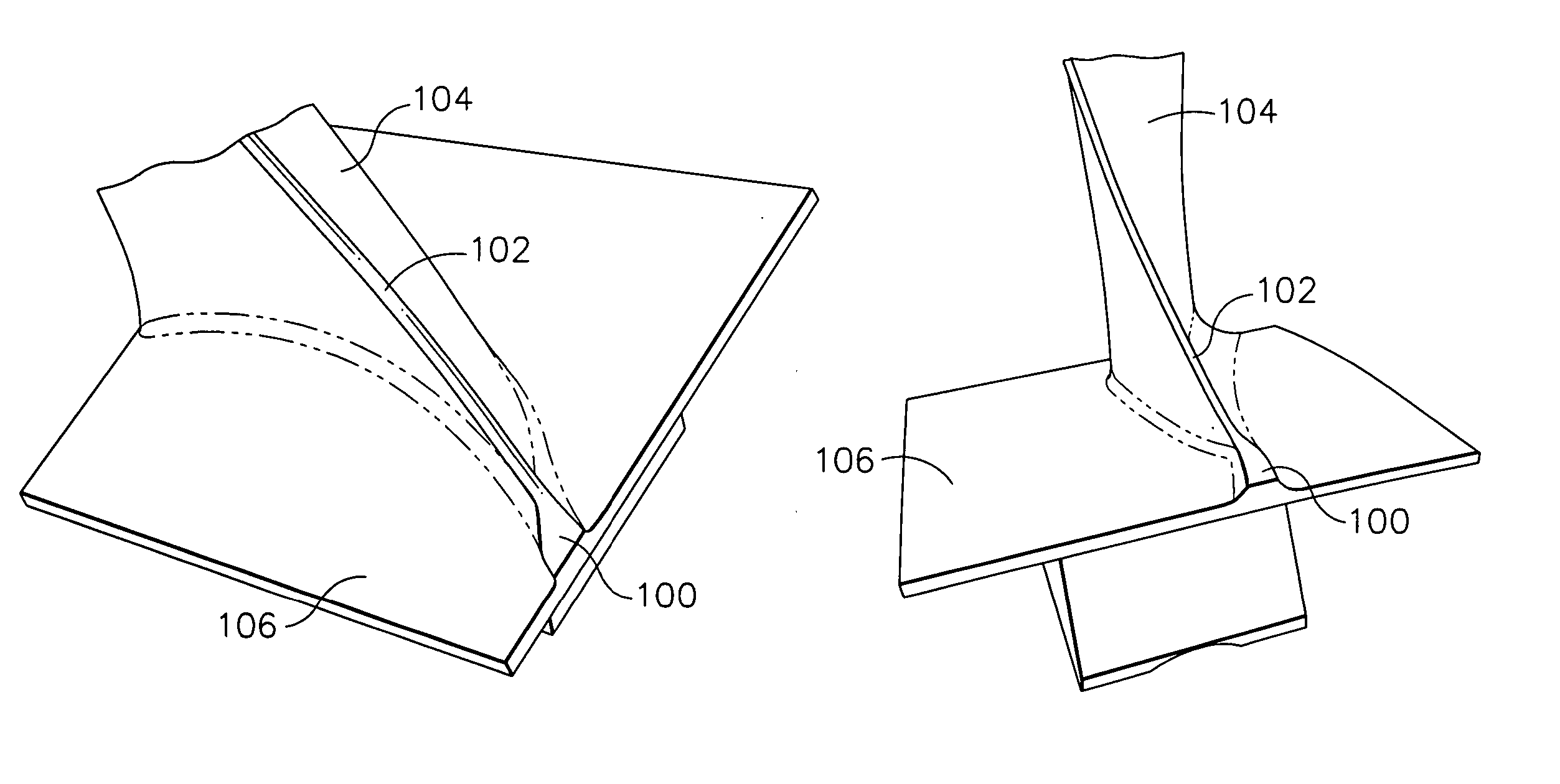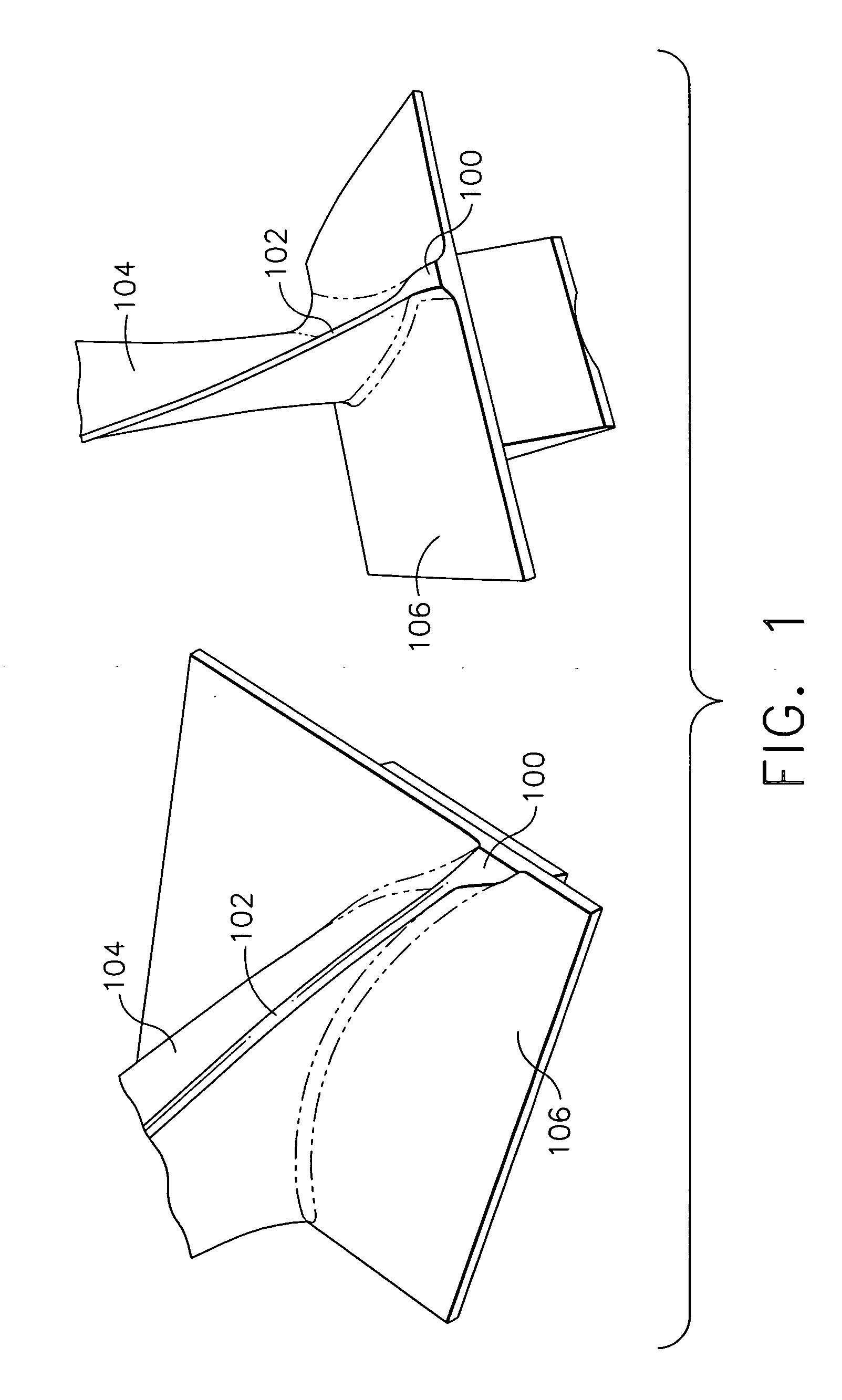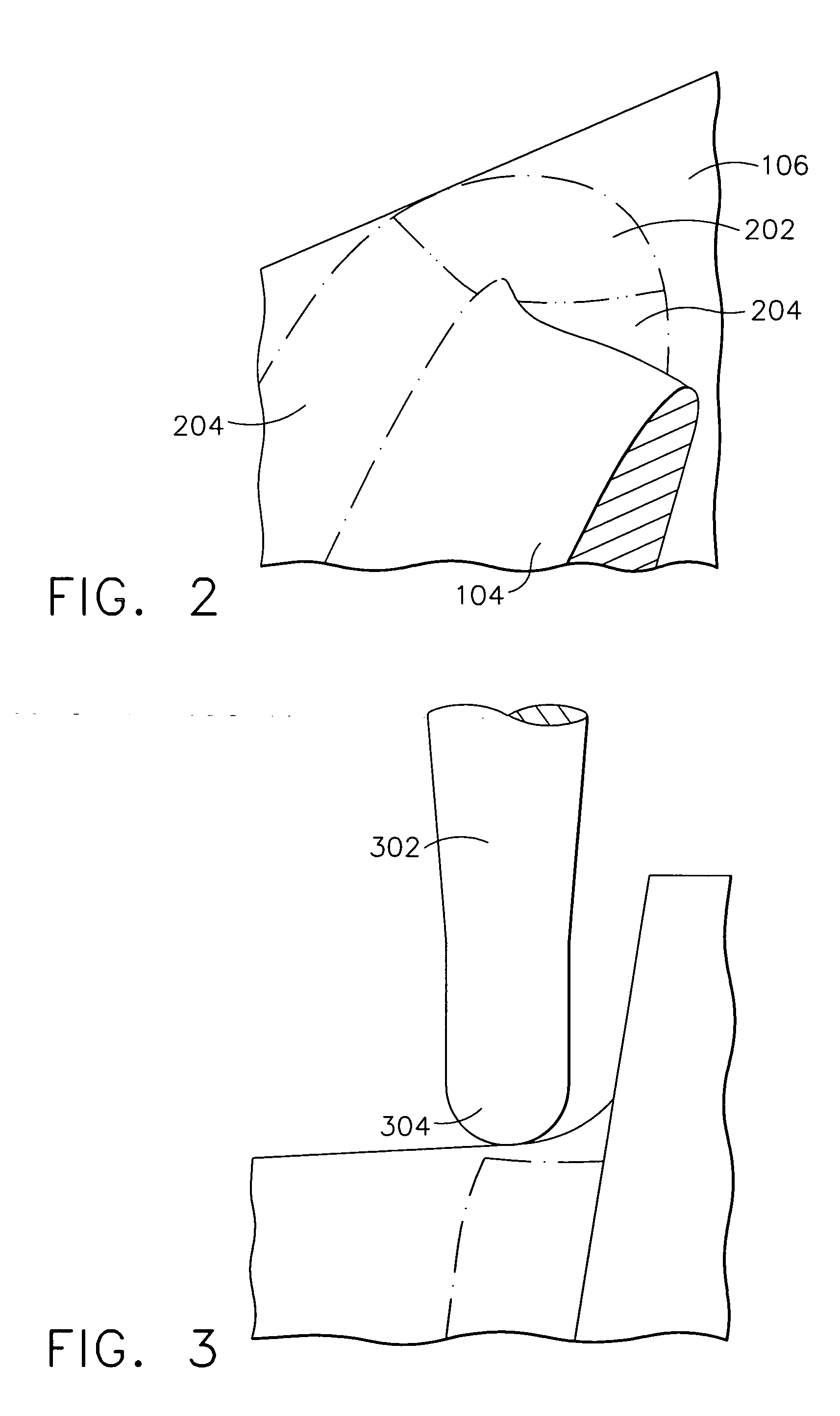Fillet machining without adaptive probing and parts finished thereby
a technology of adaptive probing and machining, applied in the direction of forging/pressing/hammering apparatus, program control, instruments, etc., can solve the problems of increasing the chance of machining chatter and requiring extra time, and affecting productivity
- Summary
- Abstract
- Description
- Claims
- Application Information
AI Technical Summary
Benefits of technology
Problems solved by technology
Method used
Image
Examples
Embodiment Construction
[0014] As a technical effect of the present invention, flexibility in the shape of a machined surface is provided. Other technical effects include facilitating a more continuous mating with, for example, an air foil and platform. In various configurations, another technical effect of the present invention is that an improved surface finish is achieved.
[0015] In some configurations of the present invention, a single point milling technique is provided that uses a smaller ball end mill than is used in root fillet milling. The drive geometry is a surface instead of a curve, and the final shape of the machined surface is controlled by the shape and location of the drive surface rather than the radius of the end mill. These configurations of the present invention provide flexibility in the shape of the machined surface, which in turn facilitates a more continuous mating with the air foil and platform. In general, a true arc is not required at the LE and TE platform fillet. The end mill ...
PUM
| Property | Measurement | Unit |
|---|---|---|
| radius | aaaaa | aaaaa |
| radius | aaaaa | aaaaa |
| chordwise length | aaaaa | aaaaa |
Abstract
Description
Claims
Application Information
 Login to View More
Login to View More - R&D
- Intellectual Property
- Life Sciences
- Materials
- Tech Scout
- Unparalleled Data Quality
- Higher Quality Content
- 60% Fewer Hallucinations
Browse by: Latest US Patents, China's latest patents, Technical Efficacy Thesaurus, Application Domain, Technology Topic, Popular Technical Reports.
© 2025 PatSnap. All rights reserved.Legal|Privacy policy|Modern Slavery Act Transparency Statement|Sitemap|About US| Contact US: help@patsnap.com



